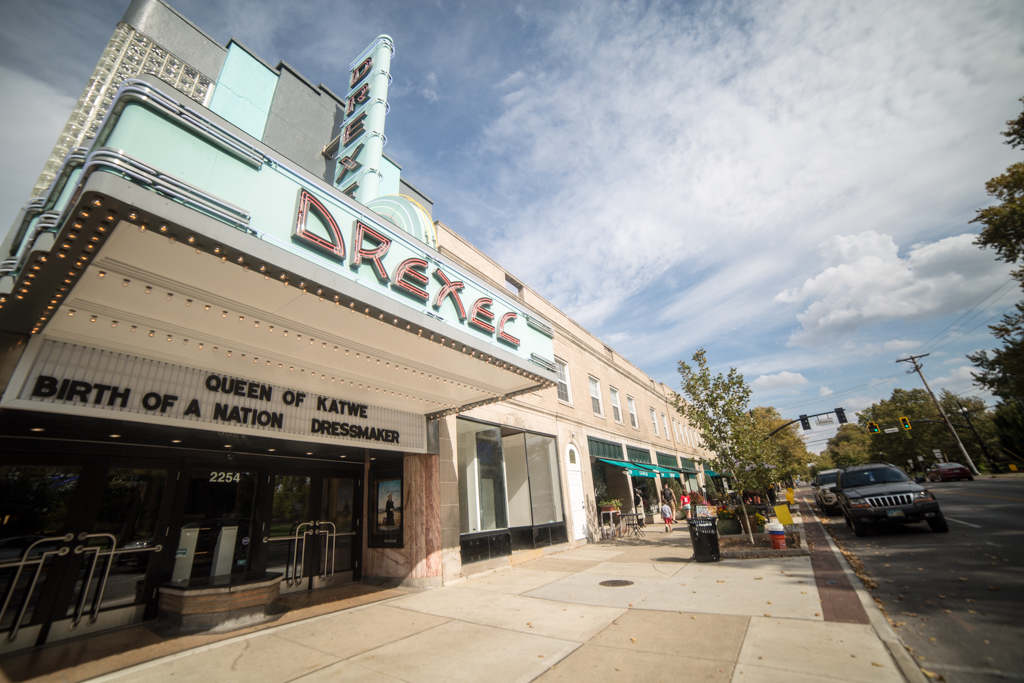A Look Inside Drexel Theatre’s Renovation
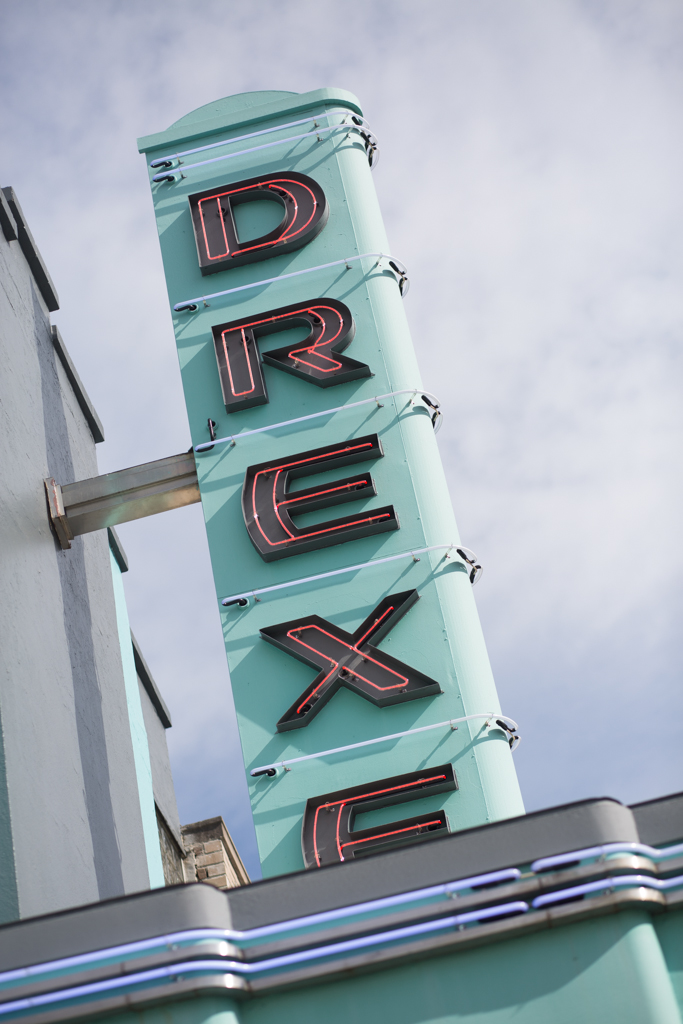
Requiem to Restoration
by J.R. McMillan, Photos by Rachel Barbash
Originally Published in (614) Magazine
When an aging theater closes the curtains and locks its doors, it normally stays that way.
That was nearly true of Drexel Theatre after more than 70 years of mainstream movies and obscure independent films. But the most recent round of renovations has restored the long-lost luster and art deco décor to Bexley’s most iconic and familiar façade.
“We wanted to restore the grandeur of the theater, but we didn’t want to change the ambiance,” explained Kevin Rouch, theater director. “That’s the fine line the architects walked, being able to update with digital screens and new concession equipment in the lobby while maintaining the feel of what patrons enjoyed most about the theater.”
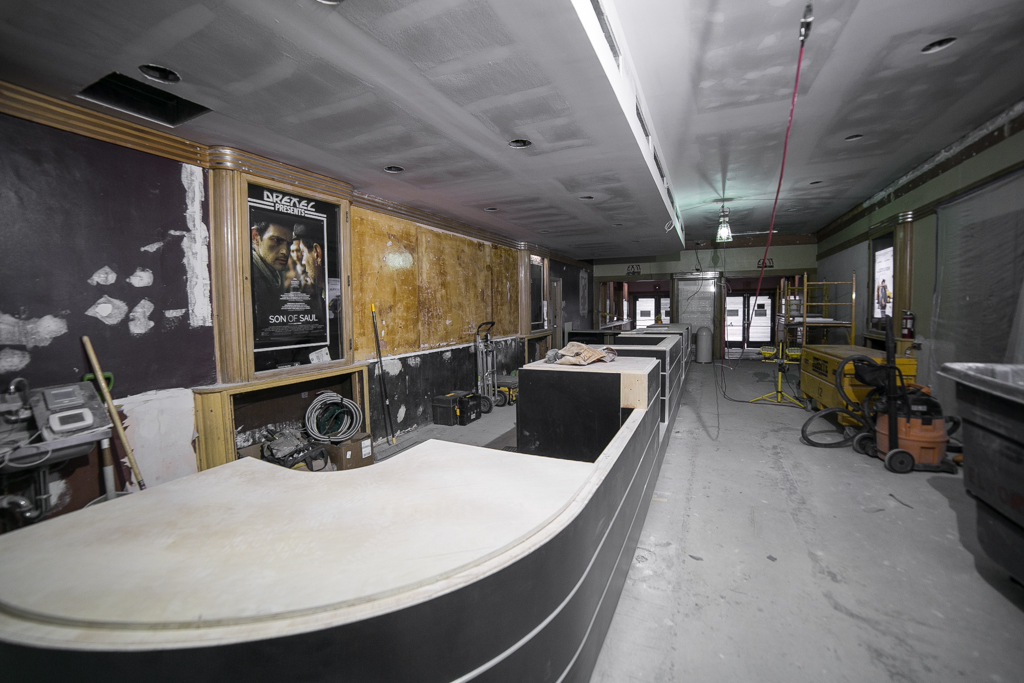
Before…
“One of our regular guests shared that her first date with her now husband was at the Drexel, but she was worried that we would change it so much that her memories would be lost,” he confessed. “But after seeing the improvements, she found me to tell me, in her eyes, it felt the same—only better.”
My own relationship with Drexel Theatre is also personal. Unlike most Columbus transplants who eventually discover the Drexel, it was literally my first stop.
It was May of 1997, and I’d just driven three hours from Huntington, West Virginia to interview for a job as the theater’s publicist—a position that turned over often and turned out to be an awkward amalgamation of advertising design, community organizing, and guerilla marketing.
College kids may have a hard time believing this, but not so long ago, getting a real beer in a real glass at a movie theater was a novelty—back when film was film, not a stream of encrypted electrons. If you wanted to know what was playing and when, you needed to find the tiny ads in the Columbus Dispatch, or the slightly larger ones in The Other Paper, The Alive, or The Lantern. If you were feeling particularly high-tech, you could pick up a landline phone and call a souped-up answering machine so a disembodied voice could read you the showtimes aloud like a cross between a town crier and a carnival barker.
That was also part of the gig—I was the voice of Drexel Theatre.
The business office was located immediately above the since defunct Drexel Radio Café, and the aroma of fresh coffee and grilled paninis was such a constant, you almost forgot about it. Piled deep under press kits, ad slicks, and one-sheets were two desks—one for me, the other for Jeff Frank.
“We all owe Jeff and Kathy a great debt for creating an incredible brand that has allowed us to maintain community support through this last phase,” Rouch said. “They are huge part of why the theater survived when times were tough.”
It’s hard to overstate how synonymous Jeff and his wife Kathy were (and still are) with the Drexel. From subtitled matinees to science fiction marathons, there was just enough subtlety and shtick to strike the balance between successes and setbacks. Jeff tended to skip sophomore projects, favoring first-time directors and undiscovered actors and actresses before they were big. Breakout films burnished the theater’s reputation for finding the next great talent and his insight for independent films was essentially unmatched in the market.
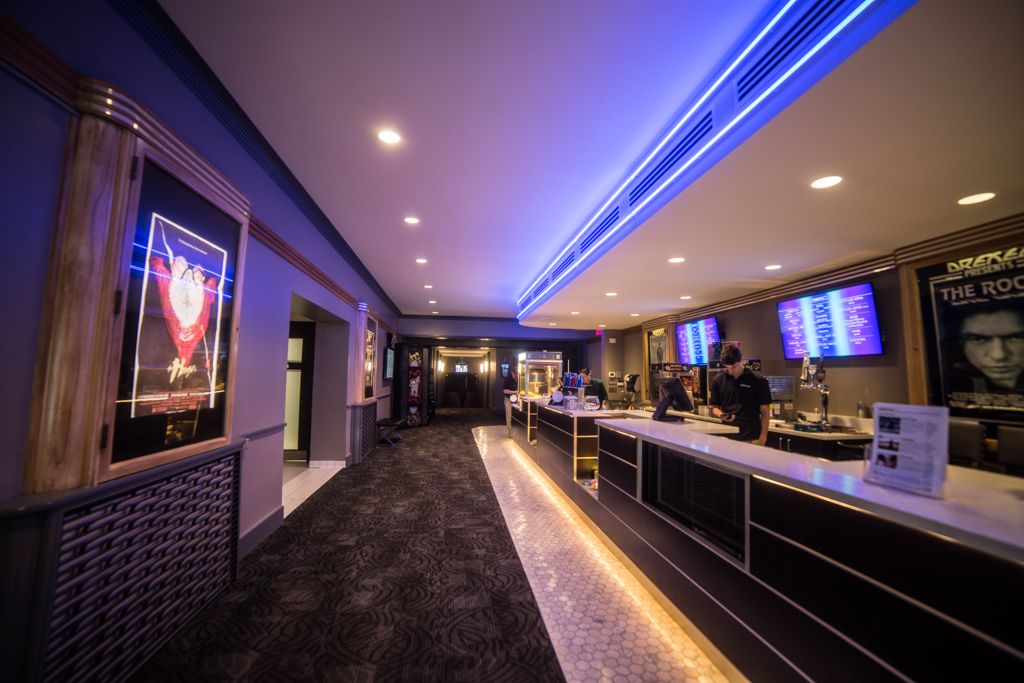
After!
On one screen, you would have Kevin’s Smith’s first foray into serious subject matter with Chasing Amy, among the first LGBT-themed films to find crossover acclaim. But you’d also find Hard Eight, Paul Thomas Anderson’s dark journey of redemption and directorial debut on another. Then there would be Microcosmos rounding them out, a French nature documentary that lasted longer at the Drexel than I did.
I remember when we actually passed on Jackie Brown, the highly anticipated follow up to Pulp Fiction, much to the dismay of the theater’s faithful. The calculation was that every other multiplex in Columbus would also be screening it over the make-or-break week between Christmas and New Years—when all of the major studios tend to release their Academy Award contenders.
We skipped it in favor of an exclusive engagement of this clever little film from a couple of best friends from Boston, directed by a guy who made a career telling stories outside the mainstream. While every other theater in town was struggling to fill seats amid high expectations and lukewarm reviews of Quentin Tarantino’s latest opus, we were selling out every screening of Gus Van Sant’s Good Will Hunting.
That’s probably a fitting metaphor for the decade that followed—some surprise hits, but mostly splashy premieres that never fully resonated with audiences. The Arena Grand would change hands, as would the Gateway. The North foreshadowed the eventual closing of the Grandview Theater. Once again, the original Drexel Theatre stood alone.
The film industry was fine, but times were lean and the future uncertain for movie theaters. Between the immediate gratification of Netflix and ease of RedBox, going to a theater to watch a movie with friends and strangers became a ritual and rite of passage almost lost on a generation raised on HBO with barely a memory of Blockbuster Video. Successful, single location cinemas survive on nostalgia and inertia—the failing ones on credit cards and fumes. Sheer force of will wasn’t going to be enough this time.
“Six years ago, the theater would have closed its doors had we not stepped in,” explained Richard Stoff, chairman of Friends of the Drexel. “We came in with a promise, to return the theater to its original art deco splendor, and create a new, inviting, and warm neighborhood community gathering space for the people of Central Ohio.”
Though most may recall the Drexel’s gala fundraising premiere of Happythankyoumoreplease, directed by Bexley’s own Josh Radnor, the groundwork for the grassroots group that rallied to restore the theater was well underway. A nonprofit board was assembled, debts were settled, and operations were reorganized before the remodeling even started.
“We had an inspiring governing board—among them were folks who inspired me, like Bob Lazarus—a pro bono study from Deloitte & Touche, the financial acumen of CAPA, and we started to restore the theater,” noted Stoff. “Bringing in that kind of legitimacy went a long way. By the time we finished it, we [had] invested $2.5 million dollars.”
Initial fixes were acute, but somewhat invisible—like a new roof and HVAC. Digital projection and sound were essential as well. Relocating the rundown bathrooms to the other side of the lobby allowed the theater to renovate while remaining open. The final phase restored the marquee, lobby, and concessions, as well as the creature comforts of the theaters themselves.
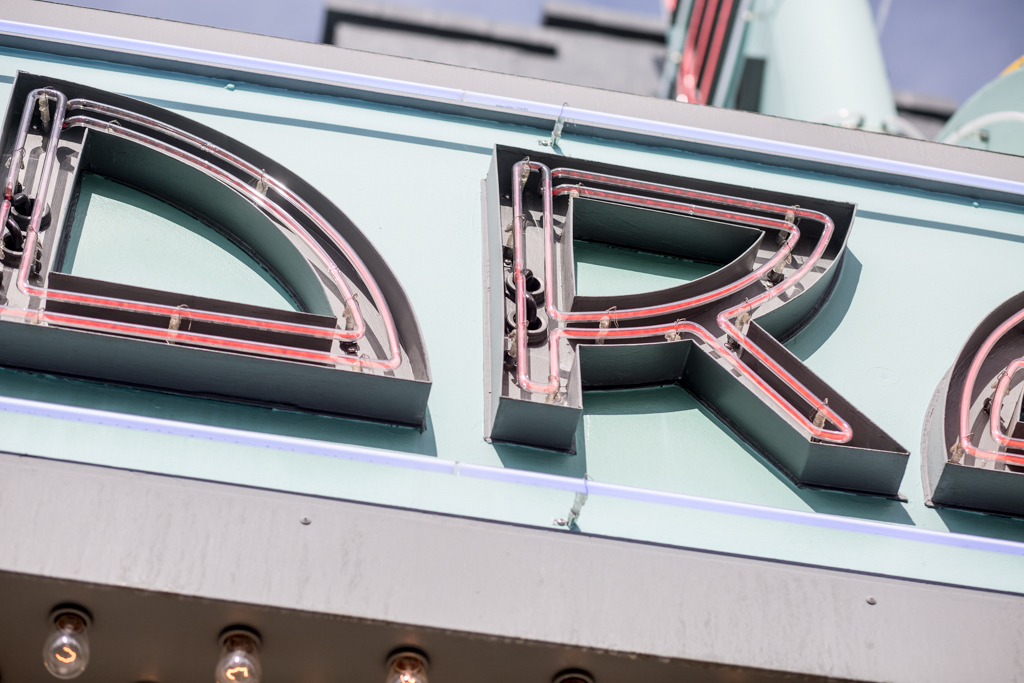
“There is a community education mission for the theater,” Stoff explained, noting the popularity of the Drexel’s “Talk-Back” panel discussions following select screenings. “There was a very powerful film that came out a few years ago called Alive Inside, a documentary about the effectiveness of music therapy in the treatment of Alzheimer’s. We asked Bonnie Burman, the director of the Ohio Department of Aging, and Peter Whitehouse, professor of neurology at Case Western, to do a Talk-Back and packed the house for that.”
Preserving a building’s appearance and aesthetic is a matter of money. It’s harder to put a price on preserving the larger role a local theater plays in the lives of its audience.
“Getting the theater placed on the National Register of Historic Places was a game changer for us, and that was no small feat,” he explained. “Drexel Theatre remains a community and cultural asset.”
For more, visit drexel.net.
BROUGHT TO YOU BY



